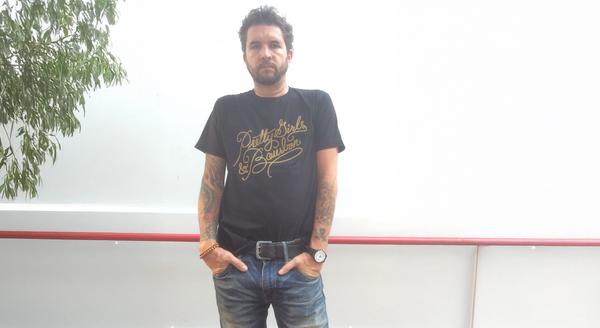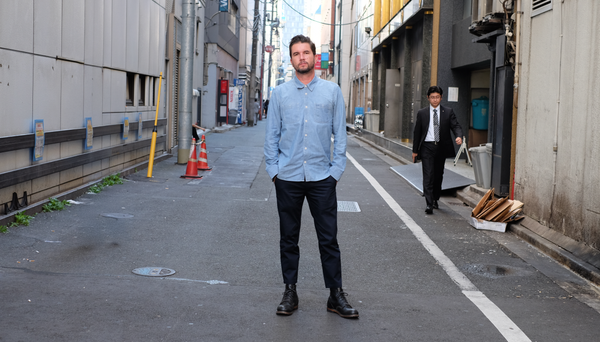Time & Materials in a Man & Machine World

“So, what’s your day rate, and how many days is this project going to take?”
Fuck, I hate that equation. And it’s a conversation I am forced to have every time I speak with a prospective client. Once I've overcome the initial hurdles with the project leader, the sponsoring executive, and other key counterparts from companies that have submitted project briefs to my agency RockPaperScissors, I'll need to consult with procurement if the company is large, like Unilever large.
And that is when things go sideways.
I remember speaking with procurement at Unilever on an experiential program for Magnum, which required umbrellas. The project approval was delayed because my price for umbrella rentals, with custom-printed canopies, was 3% more than what his records showed should be acceptable.
So you can only imagine how I felt recently walking into a similar discussion with a ‘ULI’ sized company, to talk about some 0-1 thinking around a program they are looking to develop. I was brought in for how I think about the world, about culture, about experience design. I was brought in to make an impact with a team that had no idea where to begin.
And yet, once I arrived at the procurement meeting, I was evaluated by a day rate.
There was a time when Time & Materials made sense.
You scoped the hours, tallied the vendors, calculated the margins, and billed the client. It was imperfect, yes, but it was fair. Fair to the agency. Fair to the team. Fair to the client.
Because back then, time really was the work.
The thinking, the doing, the polishing. It all took time. Creative value was labor-intensive by definition. We made decks, wrote scripts, and built brands by hand. Ideas took time. Time took money. Money bought progress.
Things have changed. Radically. Quietly. Unevenly.
AI has broken the old T&M model.
Today, things that once took a week take an hour. Tasks that required five people now take one.
Or none.
An entire campaign concept can be sketched, visualized, rewritten, and revoiced by noon. Not because the creative director is rushing. But because the tools are catching up to the thinking. And that changes everything.
In an AI-driven world, time is no longer the limiting factor. Nor is labor. Nor are materials.
So what, exactly, are we charging for?
Rethinking the Value Equation
If your fee structure is still built on the idea that more time = more value, you’re charging clients for your inefficiency, not your intelligence.
And that’s not sustainable. Not for them. Not for you. Not for anyone trying to build what’s next.
I’m not saying strategy should be free. I’m not saying creativity can be automated. I’m not saying everything should be priced like SaaS.
But I am saying it’s time to rethink the math. Because the equation has changed.
When I work with clients today, I’m not delivering hours. I’m delivering velocity. I’m delivering clarity. I am delivering experience and my way of thinking. I’m providing outcomes that used to take time, but no longer need to.
That doesn’t make the work less valuable. It makes it more valuable because now they get it sooner, most of the time, and definitely deeper and broader.
And they get it when it matters most, before the window closes. Before the media buys. Before the market moves on.
So why should faster, better, and smarter cost less? Shouldn’t it actually be worth more?
We need a new way to think about value.
Not Time & Materials. Maybe it’s Man & Machine. (I almost called my agency that.) Perhaps it’s Creative Capital. Maybe it’s something else entirely.
But whatever we call it, it has to reflect this reality: that value now lives at the intersection of intelligence and acceleration. That thinking is still rare. That great ideas still matter.
But how we get to them and how we price them must evolve.
This isn’t just about fees. It’s about fairness. It’s about aligning how we work with how the world works now. It’s about not penalizing ourselves for our own progress.
We also need to consider what a retainer means.
Retainers still carry the logic of the old model. They imply fixed outputs, recurring tasks, fixed talent, and predictable scope.
They assume we both know what’s needed in advance.
But the kind of work I do doesn’t work that way. You don’t know what you’ll need until the thinking starts. You don’t know where it will go until the questions are asked.
Some months you’ll need ten things. Some months, just one that really matters.
So I’ve been thinking about something different, sort of like a subscription model, built on fluid credits. *I would love to hear what you think, as I am in the early days of this.
Here’s the premise:
You subscribe not to my time, but to my thinking.
You get a flexible pool of Creative Capital Units - credits that can be used as needed, whether for high or low work. Some things are quick pulls: a script draft, a set of AI visuals, a narrative outline. Some are deeper investments: a strategy workshop, a new positioning, a brand reframe.
But everything flows from the same credit pool. No time sheets. No “one more revision” fees. No wasted line items.
Just a shared commitment to moving fast, thinking clearly, and making work that lands.
And if you don’t use everything in one cycle? It rolls forward because access to good thinking doesn’t expire. It’s more flexible. It’s more honest. And most importantly, it reflects how we actually work in this new era: faster, deeper, and in constant flux.
Defining Worth in the Age of Acceleration
The real question isn’t how long it took. The real question is: What’s it worth now that it’s done?
Worth, in this context, has nothing to do with time spent. Worth is:
- The clarity that unblocks a team
- The narrative that aligns a room
- The idea that reframes a market
- The confidence to say “this is us” and mean it
- The momentum to move, when everything else was stuck
Worth is measured in forward motion. In better meetings. In smarter decks. In clearer decisions. In the gap between “we’re not sure” and “we’re ready.” It’s the value of getting there sooner and making the right thing, instead of creating more things, being able to ship with confidence, without hesitation.
That’s the shift I’m thinking about. From time and materials to clarity and momentum. From billing for hours to building for outcomes. From the old math of effort to the new math of value.
Because in this new era, the only thing more expensive than good thinking is waiting too long to have it.

The world is shifting — and so is the work that matters. At RockPaperScissors, we don’t trade in hours. We trade in transformation. In impact.
You’re not buying time and materials. You’re investing in experience, creative capital, and the clarity to navigate what’s next.
If you’re navigating change, standing up something new, or stuck at the start, let’s talk.
Field Notes on The Epilogue Economy™ is a reader-supported publication. To receive new posts and support my work, consider becoming a free or paid subscriber.



